Welcome to a fascinating collection of peculiar reptiles that will surely captivate your imagination. Among these extraordinary creatures are the Armadillo girdled lizard, a remarkable reptile with plated skin and a unique defense mechanism. The Asian giant softshell turtle also stands out with its massive size and soft shell, defying the expectations of its kind. Flying geckos and flying snakes have evolved the astonishing ability to glide, defying gravity in their own distinctive ways. Lastly, we have the marine iguana, a truly exceptional reptile that defies its reptilian nature by foraging at sea.
This page unveils not only the aforementioned extraordinary reptiles but also many other enigmatic examples from various corners of the globe.
Have you ever had the privilege of encountering any of these species? If so, which one is your favorite? We are also eager to learn about any peculiar reptiles we may have missed. Please don’t hesitate to share your insights in the comments section at the bottom of this page!
1. Armadillo Girdled Lizard
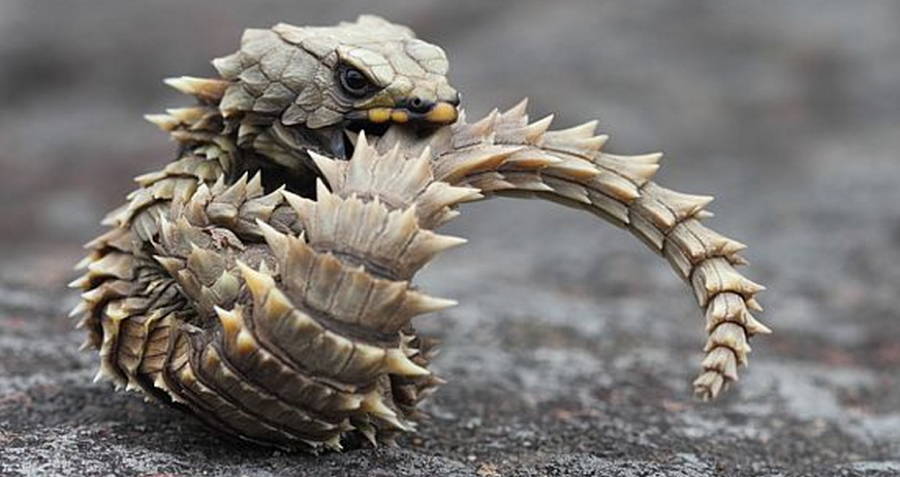
- Scientific name: Ouroborus cataphractus
- Family: Cordylidae
- Continent: Africa (specifically, South Africa)
- IUCN conservation status: Near Threatened
Description: Hailing from South Africa, this eccentric lizard showcases its ingenuity through a remarkable defense mechanism of curling into a ball and biting its own tail. In this peculiar act, it resembles the ancient symbol known as the “Ourobouros,” thus inspiring its scientific name. The armadillo girdled lizard primarily nourishes itself with small invertebrates, and it’s one of the few lizard species that give birth to live young instead of laying eggs.
2. Asian Giant Softshell Turtle
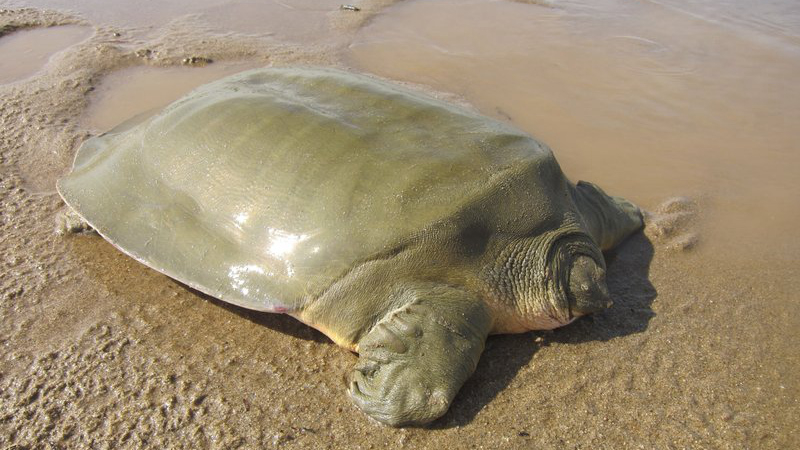
- Scientific name: Pelochelys cantorii
- Family: Trionychidae
- Continent: Asia (Southeast Asia)
- IUCN conservation status: Critically Endangered
Description: Thriving in the realms of Southeast Asia, this freshwater turtle boasts an impressive size, joining the ranks of the largest softshell turtles. Its unique attribute lies in its flattened, leathery carapace, distinguishing it from its peers. The Asian giant softshell turtle predominantly feasts on fish, crustaceans, and mollusks. Unfortunately, this extraordinary-looking turtle faces the critical threat of habitat loss and overhunting for its delectable meat.
3. Blue-Tongued Skinks
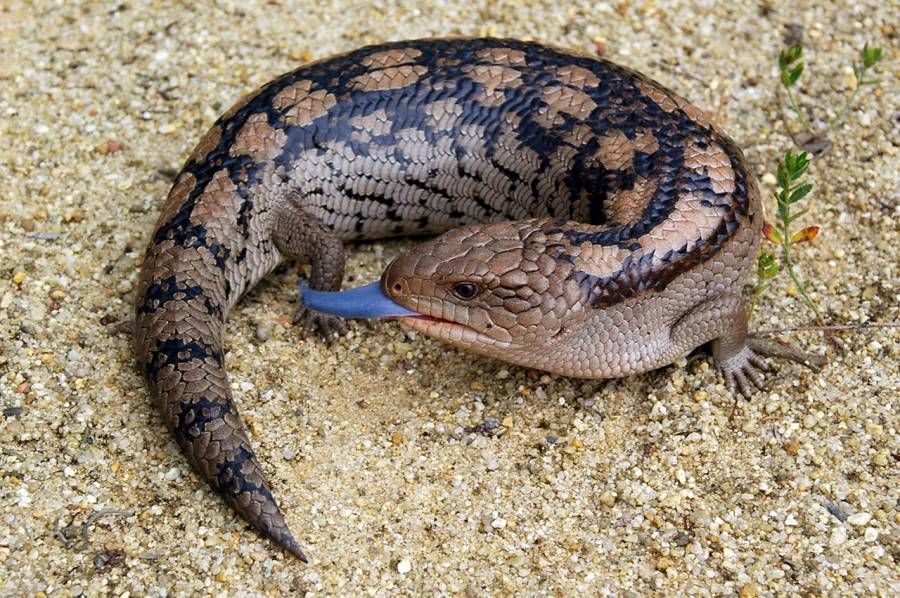
- Scientific name: Tiliqua spp.
- Family: Scincidae
- Continent: Australia
- IUCN conservation status: Varies by species
Description: Originating from Australia, these captivating reptiles flaunt vibrant blue tongues, which they employ as a startling display against potential predators. The sudden sight of their azure tongues startles these threats, providing the lizards an opportunity to escape unscathed. Blue-tongued skinks possess an omnivorous appetite, savoring an assortment of plant materials, insects, and small creatures.
4. Chinese Crocodile Lizard
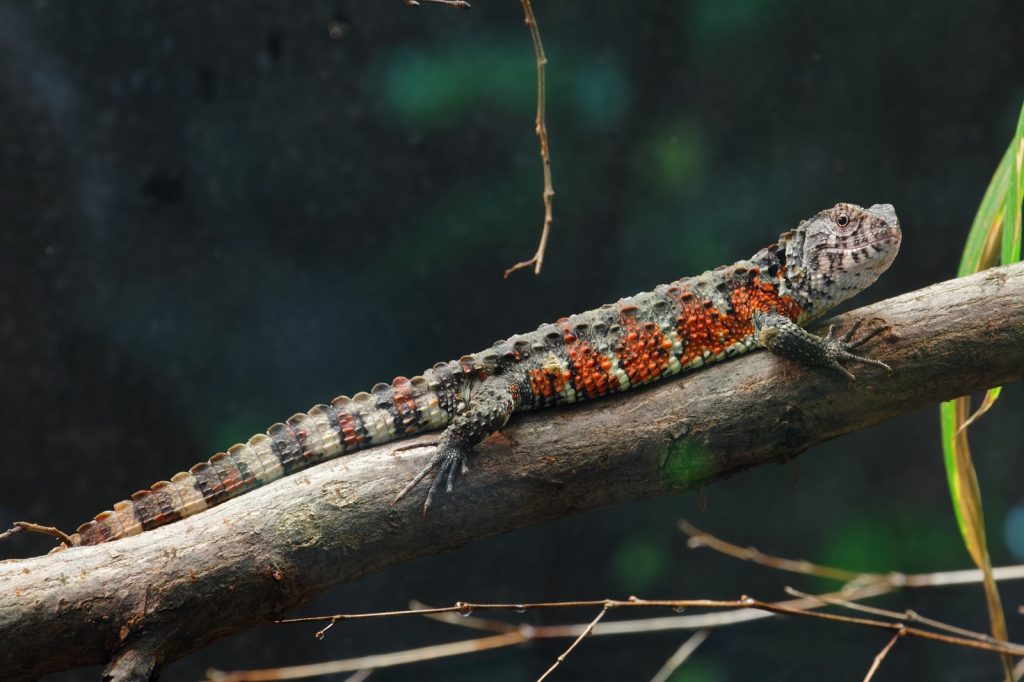
- Scientific name: Shinisaurus crocodilurus
- Family: Shinisauridae
- Continent: Asia (specifically, China and Vietnam)
- IUCN conservation status: Endangered
Description: Roaming the lands of China and Vietnam, this semi-aquatic lizard showcases a distinctive appearance with keeled scales resembling those of a crocodile, imparting it with an otherworldly allure. Its dietary preferences encompass insects, invertebrates, and small fish. Unfortunately, this peculiar reptile finds itself on the endangered list due to habitat loss and the demand for its sale in the pet trade.
5. Flying Geckos

- Scientific name: Gekko spp. (several species of flying geckos)
- Family: Gekkonidae
- Continent: Asia (Southeast Asia)
Description: Nestled in the heart of Southeast Asia, these arboreal geckos have undergone remarkable adaptations, including skin flaps and webbed feet, enabling them to gracefully glide short distances between trees. Their diet primarily consists of insects and other small invertebrates.
6. Frilled Lizard / Frill-Necked Lizard

- Scientific name: Chlamydosaurus kingii
- Family: Agamidae
- Continent: Australia
- IUCN conservation status: Least Concern
Description: Hailing from the vast lands of Australia, this lizard takes the spotlight with its grandiose, frill-like collar that it unfurls to intimidate predators or attract potential mates. Interestingly, the iconic appearance of this species inspired the portrayal of the Dilophosaurus dinosaur in the renowned film Jurassic Park, although the real Dilophosaurus had no evidence of a frill. The frill-necked lizard predominantly dines on insects and small vertebrates.
7. Gharial
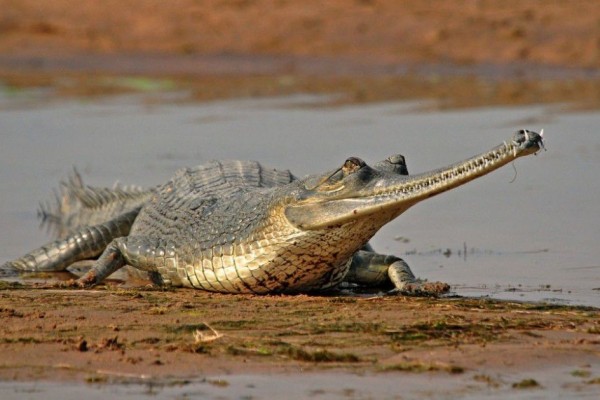
- Scientific name: Gavialis gangeticus
- Family: Gavialidae
- Continent: Asia (Indian subcontinent)
- IUCN conservation status: Critically Endangered
Description: Thriving in the lush landscapes of the Indian subcontinent, the gharial commands attention as a large, fish-eating crocodilian possessing an elongated, narrow snout adorned with razor-sharp teeth. It finds solace in freshwater rivers, where it primarily feasts on its piscine prey.
8. Green Basilisk / Common Basilisk Lizard
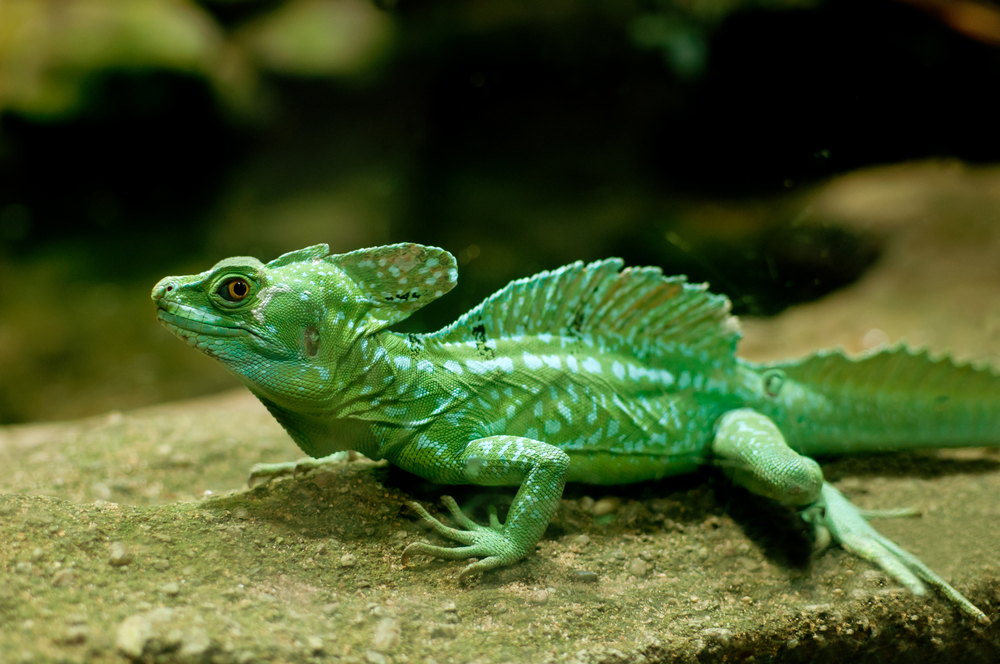
- Scientific name: Basiliscus plumifrons
- Family: Corytophanidae
- Continent: Central America
- IUCN conservation status: Least Concern
Description: Native to the captivating Central American region, this visually striking lizard goes by multiple names, including the “Jesus Christ lizard,” owing to its incredible ability to dash across the water’s surface. As an omnivore, it indulges in a varied diet encompassing insects, small vertebrates, and plant matter.
9. Horned Lizards
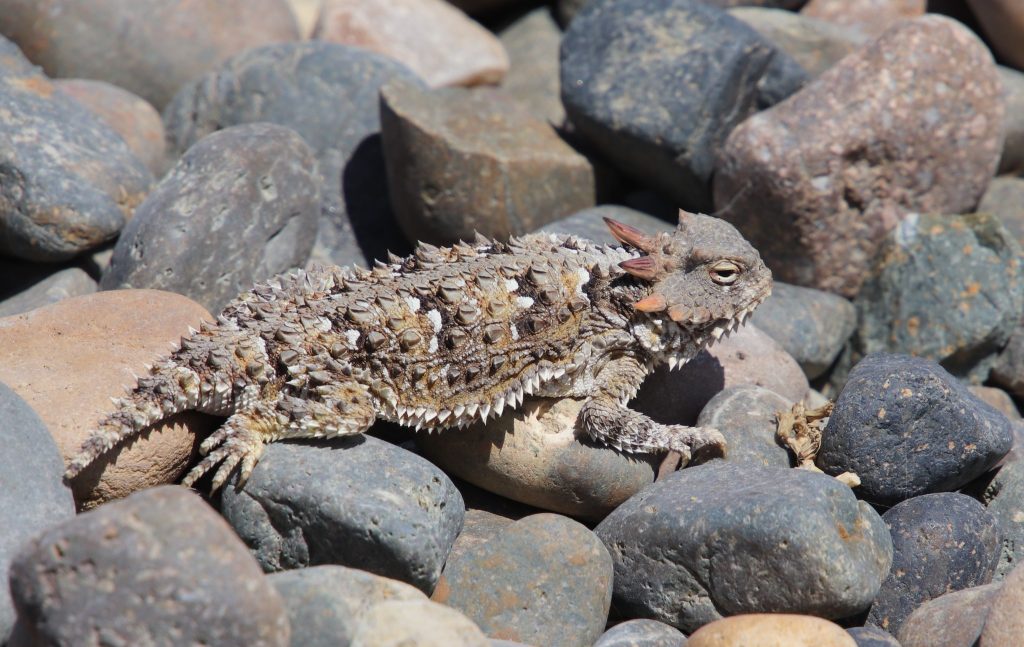
- Scientific name: Phrynosoma spp.
- Family: Phrynosomatidae
- Continent: North America
- IUCN conservation status: Varies by species
Description: Often referred to as horny toads, these reptiles possess a flattened, toad-like appearance, accentuated by spiny projections adorning their bodies. Despite their fearsome exterior, these intriguing creatures primarily subsist on ants and other diminutive insects. Some horned toads possess the peculiar ability to shoot blood from the corners of their eyes, an extraordinary adaptation aiding their escape from potential predators.
10. Malagasy Leaf-Nosed Snake
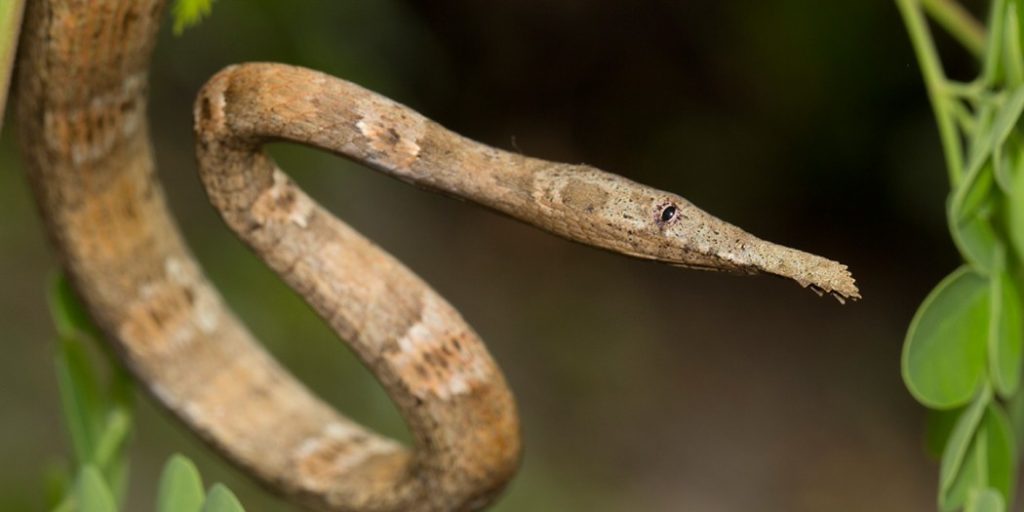
- Scientific name: Langaha madagascariensis
- Family: Colubridae
- Continent: Africa (specifically, Madagascar)
- IUCN conservation status: Least Concern
Description: Native to the enchanting island of Madagascar, this snake’s allure lies in its distinctively shaped snout resembling a leaf. While the purpose of this remarkable feature, aside from camouflage, remains a mystery, the snake exploits it to its advantage while ambushing prey, which primarily includes lizards and other small vertebrates.
11. Marine Iguana
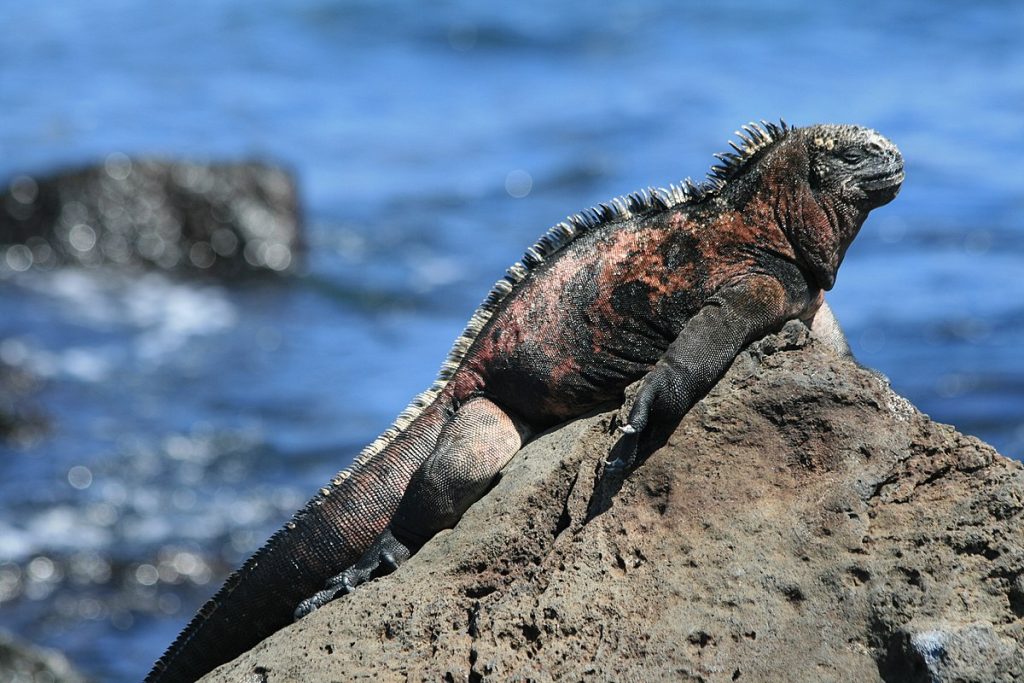
- Scientific name: Amblyrhynchus cristatus
- Family: Iguanidae
- Continent: South America (specifically, the Galápagos Islands)
- IUCN conservation status: Vulnerable
Description: Thriving exclusively on the captivating Galápagos Islands, the marine iguana stands apart as the sole lizard species known to venture into the ocean for sustenance, primarily consuming algae. Equipped with specialized adaptations such as a blunt snout and robust limbs, the marine iguana navigates the waters in search of its unique diet. This peculiar reptile represents just one of the many remarkable and exclusive species found on this remote island group.
12. Mary River Turtle

- Scientific name: Elusor macrurus
- Family: Chelidae
- Continent: Australia
- IUCN conservation status: Endangered
Description: Endemic to Australia’s Mary River, this freshwater turtle captures attention with its algae-covered shell and head, earning it the moniker of “punk turtle.” An extraordinary ability distinguishes this species – it can breathe through specialized glands in its cloaca, allowing it to remain submerged for several days, supplementing its regular breathing. As an omnivore, the Mary River turtle partakes in a diverse diet consisting of plant material, insects, and mollusks.
13. Mata Mata

- Scientific name: Chelus fimbriatus
- Family: Chelidae
- Continent: South America
- IUCN conservation status: Not Evaluated
Description: Found in the depths of South America, the mata mata turtle showcases a unique appearance with a flattened, leaf-like head, a spiked snout, and a rough, bark-like shell. This extraordinary reptile’s bizarre features serve as impeccable camouflage, aiding its role as an ambush predator, feasting primarily on fish and other aquatic creatures.
14. Ornate Flying Snake
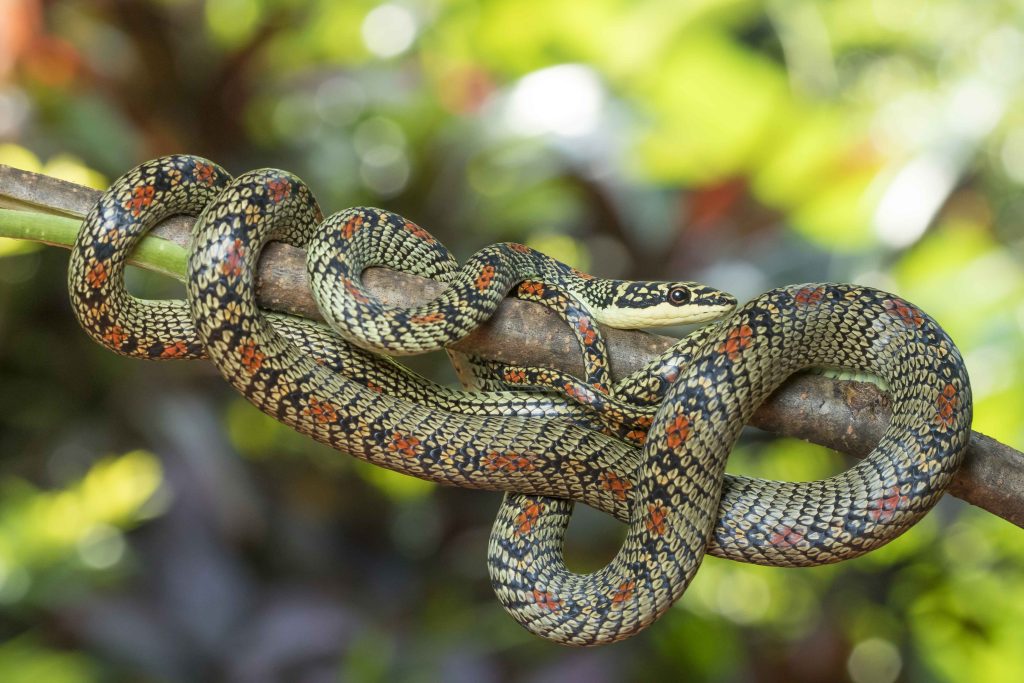
- Scientific name: Chrysopelea ornata
- Family: Colubridae
- Continent: Asia
- IUCN conservation status: Least Concern
Description: Native to Asia, this peculiar snake possesses the extraordinary ability to glide through the air. By flattening its body and undulating skillfully, it defies gravity with elegance. Arboreal by nature, the ornate flying snake primarily preys upon small vertebrates, including lizards and rodents.
15. Pig-Nosed Turtle

- Scientific name: Carettochelys insculpta
- Family: Carettochelyidae
- Continent: Oceania (Australia and New Guinea)
- IUCN conservation status: Endangered
Description: Inhabiting the realms of Australia and New Guinea, this freshwater turtle captures attention with its distinctive pig-like snout, which doubles as a snorkel when submerged underwater. Notably, this turtle possesses flipper-like feet, a feature unique among freshwater turtles. As an omnivore, it indulges in both plant material and small aquatic animals as part of its diet.
16. Satanic Leaf-Tailed Gecko
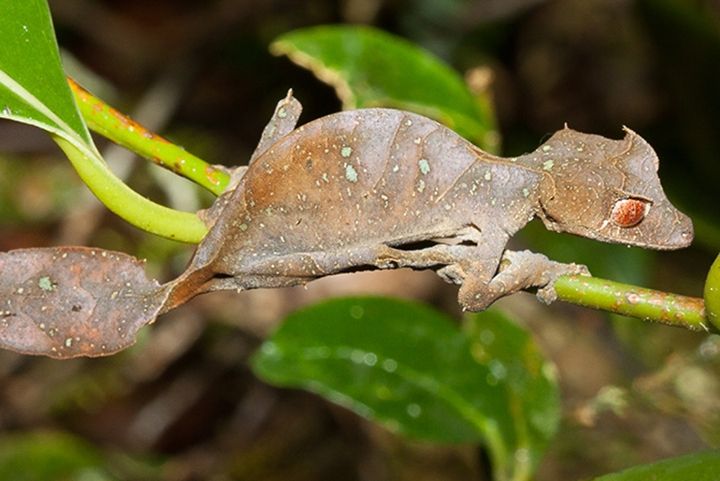
- Scientific name: Uroplatus phantasticus
- Family: Gekkonidae
- Continent: Africa (specifically, Madagascar)
- IUCN conservation status: Least Concern
Description: Limited to the African island of Madagascar, this gecko boasts a captivating appearance, mimicking the shape and coloration of a leaf. This remarkable camouflage aids the gecko in blending seamlessly with its environment. Feeding primarily on insects and other small invertebrates, this gecko, like its relatives, lacks eyelids, relying on its tongue for ocular hygiene.
17. Slow Worm
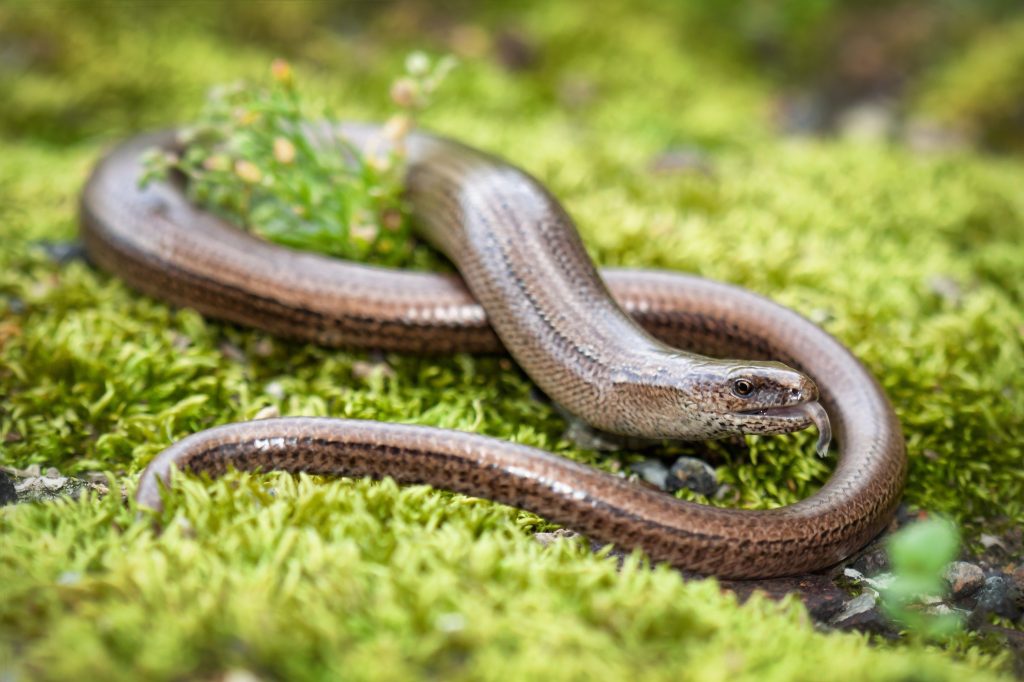
- Scientific name: Anguis fragilis
- Family: Anguidae
- Continent: Europe and Asia
- IUCN conservation status: Least Concern
Description: Despite its resemblance to a snake, the slow worm surprises observers as a legless lizard, belonging to the fascinating category of “legless lizards” found worldwide. A closer look reveals distinct features such as eyelids and external ear openings, setting it apart from true snakes. As a carnivore, the slow worm nourishes itself on slugs, snails, and other invertebrates. Its preferred habitats include gardens and grasslands.
18. Spiny Bush Viper
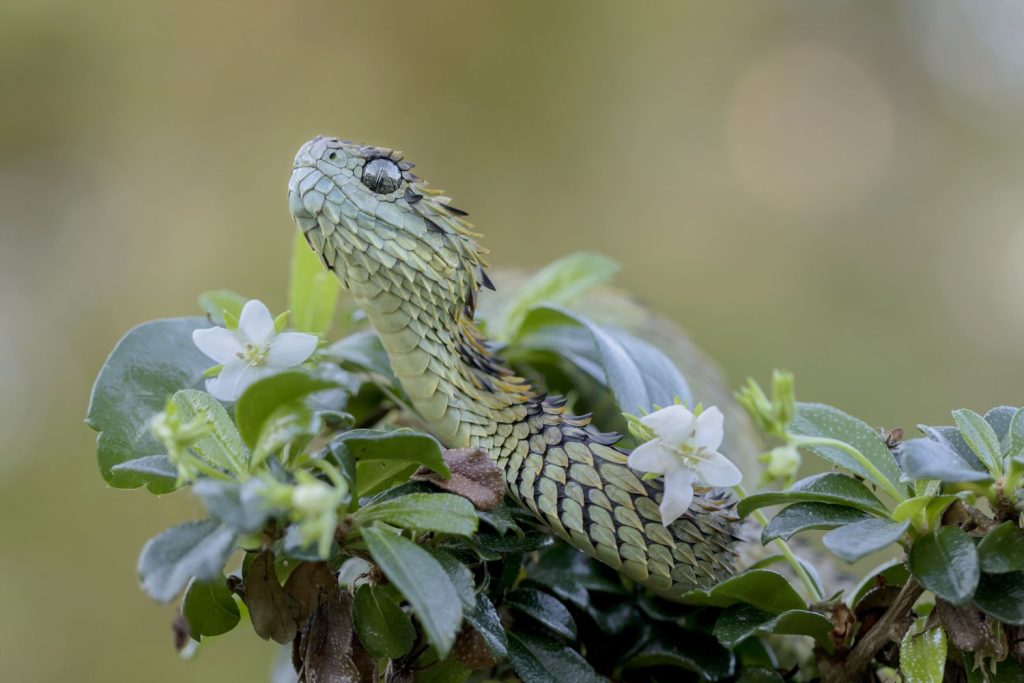
- Scientific name: Atheris hispida
- Family: Viperidae
- Continent: Africa
- IUCN conservation status: Least Concern
Description: Resembling a mythical creature from the realms of fantasy, the spiny bush viper mesmerizes with its striking appearance. Adorned with keeled, spiny scales that run along its body, this snake is also known as the hairy bush viper. Arboreal by nature, it preys primarily on small mammals, birds, and lizards. Caution is necessary, as a bite from this peculiar reptile can prove fatal to humans.
19. Tentacled Snake

- Scientific name: Erpeton tentaculatum
- Family: Homalopsidae
- Continent: Asia (specifically, Southeast Asia)
- IUCN conservation status: Least Concern
Description: Found in the languid waters of Southeast Asia, this aquatic snake sports an extraordinary feature – two fleshy tentacles on its snout. These tentacles are believed to aid in sensing movement, assisting the snake in capturing its preferred prey, which mainly consists of fish.
20. Thorny Devil

- Scientific name: Moloch horridus
- Family: Agamidae
- Continent: Australia
- IUCN conservation status: Least Concern
Description: Native to the captivating landscapes of Australia, the thorny devil stands out with its distinctive appearance. Adorned with horns, sharp spines, and a spiky “false head” on its neck, this lizard possesses an arsenal of adaptations to confound potential predators. Its diet revolves around ants, devouring thousands in a single day.
These captivating and peculiar reptiles offer a glimpse into the astonishing diversity of nature. From unique defense mechanisms to extraordinary appearances and remarkable abilities, each species leaves an indelible mark on the world of reptiles.